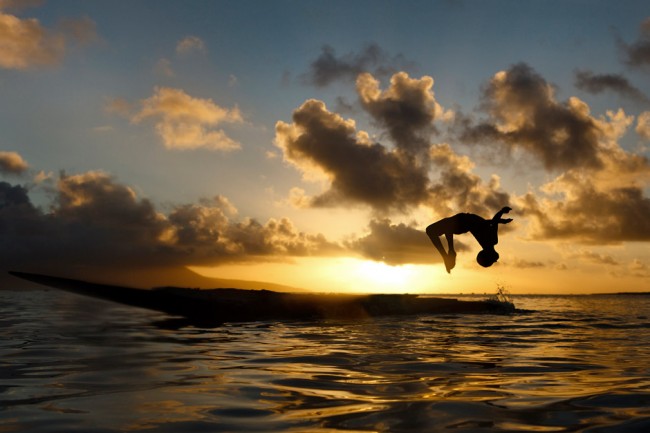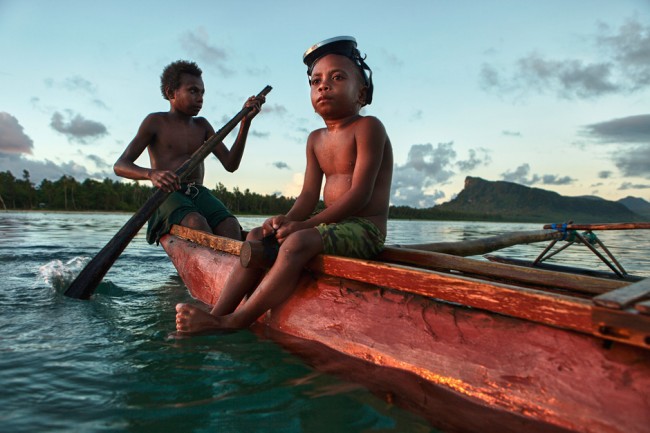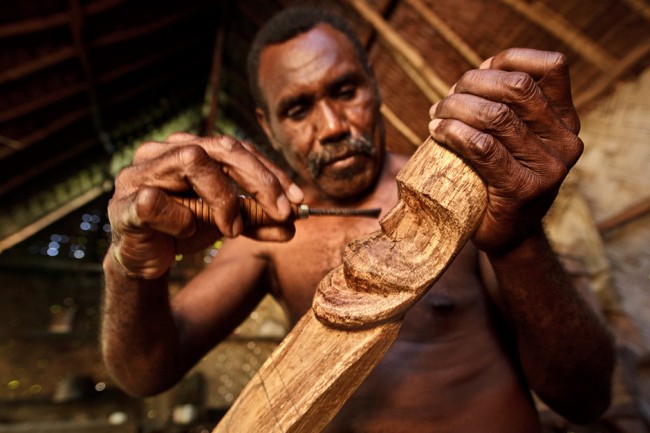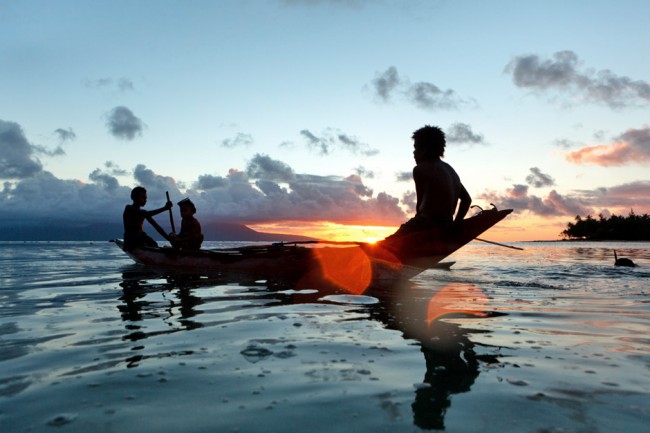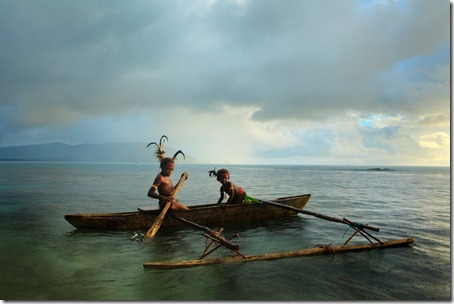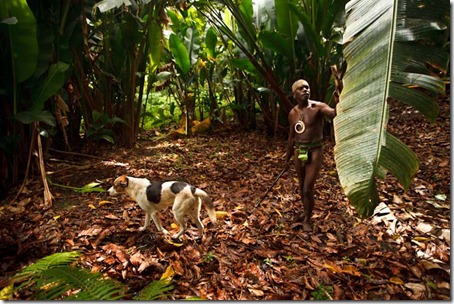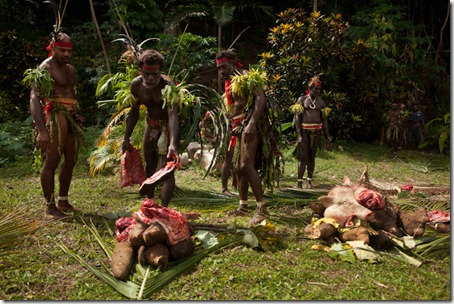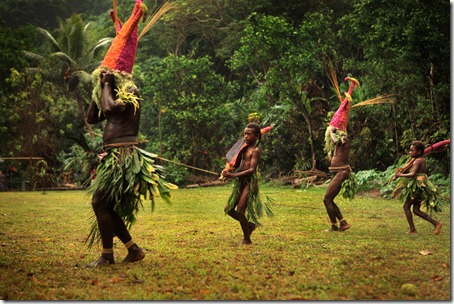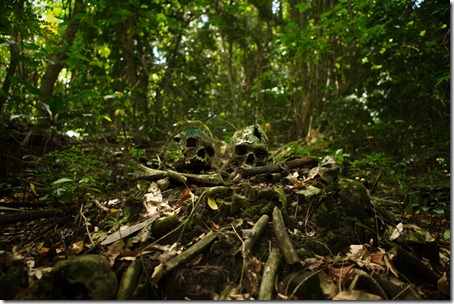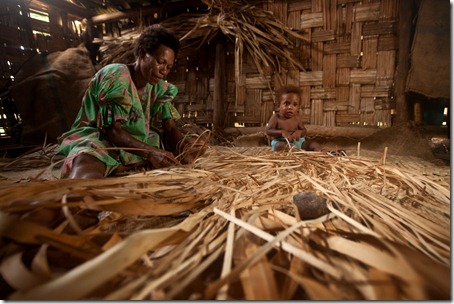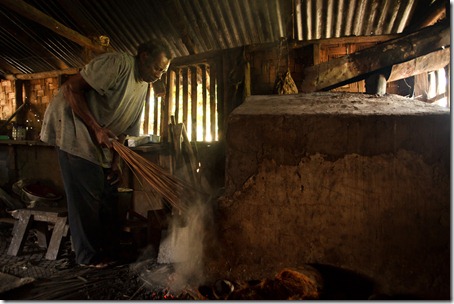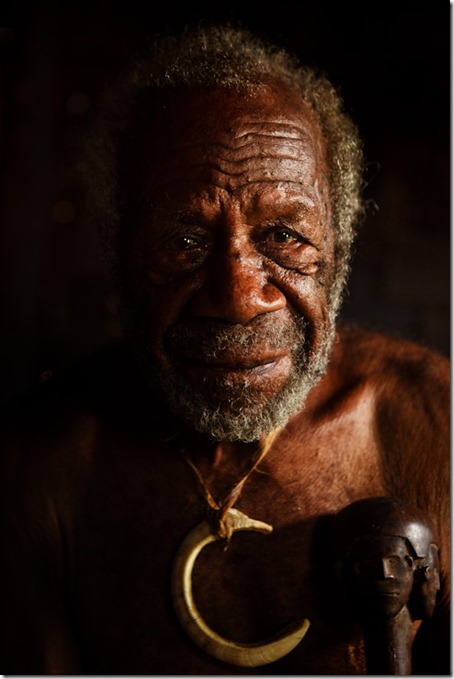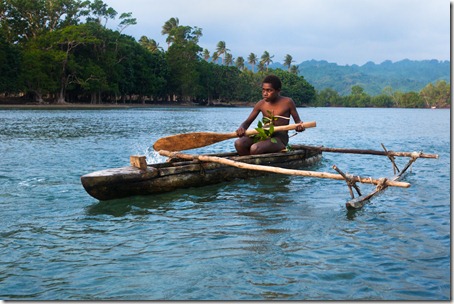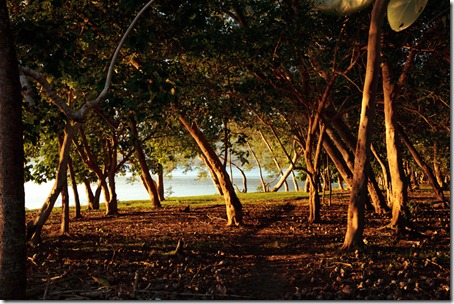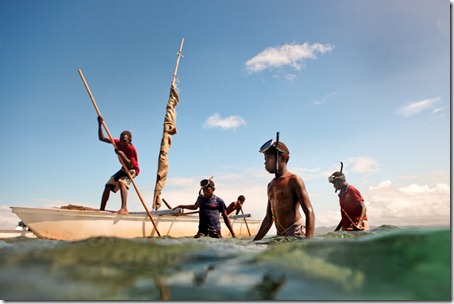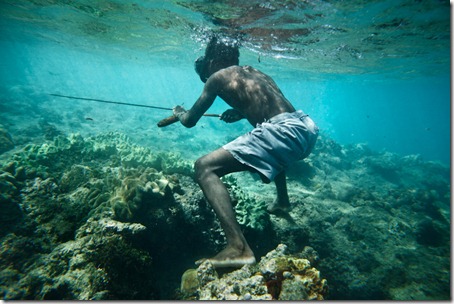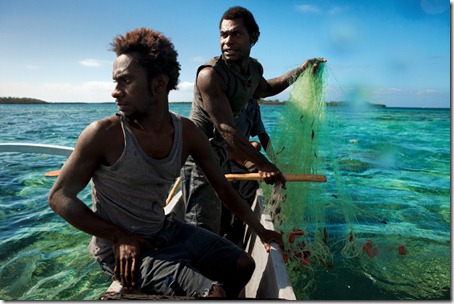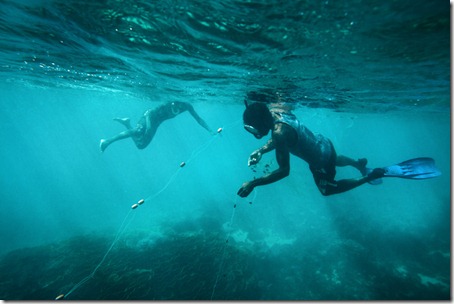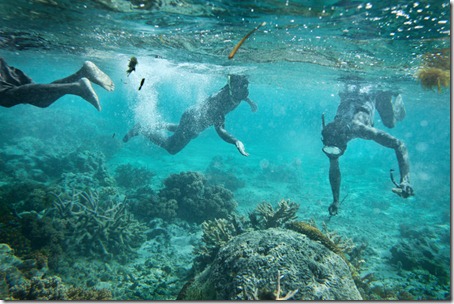Winding roads with sheer drops to hundreds of meters, huge rocks being exploded to clear those roads, ancient cultures clinging to their timeless ways of living and of course, incredible, awe-inspiring mountains, everywhere you look. This trip of mine to the Himalayas has been as exciting, as adventurous and as creatively satisfactory as I had dreamt and hoped it would be.
Off to the Himalayas
While in the Philippines, I somewhat spontaneously decided to go to the Indian Himalayas for my 30th birthday. I’ve jokingly called it an early mid-life crisis. Part of the reason for this trip is to prove to myself that I can ride to Ladakh on a motorcycle, another part is that I just want to live in the moment to the fullest and, of course I have some photographic ideas too.
Donsol and Whale Sharks - Sometimes it's good to just travel.
As travelers we often have certain things we want to do when we visit places. Sometimes it’s just to make a tick on the “to-do” list. Other times, it’s because we really, really want to do those things. Swimming with the whale sharks at Donsol belongs to the latter category. I really, really wanted to do it. I was curious about what it would be like, ever since a friend back in Australia told me that there’s a place in the Philippines where you are almost guaranteed the chance.
Let There be Blood! Good Friday with Infanta Penitents
Good Friday in the town of Infanta may have very well been the most absurd experience I’ve ever had in all of my travels. Just when I thought I was starting to understand how things “work” here, I was proven otherwise. The documentary photographer part in me was saying “Chill dude, you’ve seen ‘unusual’ rituals before”. But the regular person kept screaming, “This is some craaazy shit!” As the titles suggests, there was indeed blood involved. Just felt obliged to warn you all.
Breathtaking Philippines
The Philippines are officially going into my books as one of the most beautiful countries I’ve visited, at least as far as breathtaking scenes per square kilometer go, they’re plentiful. The spectacular combination of mountains and water is everywhere and as I might have mentioned a few times, I am truly a sucker for this kind of scenery.
To Leave the Place you Fell in Love with
Every traveler knows how it feels. When you fall in love with a place, you come to appreciate it on so many levels. The natural beauty, the smells, the sounds, the smiles. You’ve connected with the locals, you’ve made friends that will remain close to your heart. It’s sad saying “Good bye”. You don’t know if it’s a “Good bye forever” or a “See you again some time”. You hope it’s the latter. But you never know. If you’ve had your share of travels and good byes, you understand that places and people change. Nothing in life is set, there are no guarantees.
Dear aspiring travel photographer
Fishermen of San Joaquin
I’ve spent the last three weeks in the small town of San Joaquin on Panay island in the Philippines. Due to my “activities” - the constant waking up in the morning and the fact that swimming in the middle of the sea, while going out with the fishermen can be rather physically demanding (for someone who’s not in the best shape) I’ve been too fatigued to write anything substantial during this time.
Good bye Boracay! Hello deep, blue sea!
I’m in a small town called San Joaquin. I’ve come here after a few twists of fate led me to get in contact with an American volunteer working in “Coastal Resource Management” in the area. As those of you who have been reading this blog for a while know, I have a bit of an obsession for things fish and fishermen related. I guess it’s because I love eating fish and admire the men who brave the unforgiving seas to make a living catching that fish. I admire them even more now that I have gone out to sea with them.
Ati-Atihan or when Catholic and Tribal traditions converge
I knew about Ati-Atihan festival much before I came to the Philippines, I saw images of it numerous times, they always fascinated me. When I realized that I was in the country at the time that the festival would be held, in its’ original location Kalibo, I decided to try my best to make it to Kalibo to shoot this colorful and dramatic event.
Malatapai Livestock Market
Christmas with turtles and coral
Those who know me even a little, know how frustrating and irritating I find Christmas to be. Not only Christmas, but the whole period that leads up to it. I’ve blogged before that my work as a Santa Claus photographer (seeing the ugly side of Christmas) back in my university days might have had something to do with it, as did undoubtedly the fact that I spent my childhood days in communist USSR, where Christmas was purely a religious thing and religion was frowned upon.
The city of Vigan and a video
I’ve left the cool Cordillera mountains for the warmth of the plains and a rather amazing city (more like town) by the name of Vigan. Vigan is supposed to have the highest amount of preserved colonial buildings anywhere in the Philippines and I have to say that these old Spanish/Mexican/Chinese/Filipino “relics” make the town very atmospheric indeed...
A few days in the Cordillera and some thoughts
Manila - markets, malls and lit-up jellyfish
Into unchartered territory
I’ve well and truly settled back into the “other” world in which I sometimes live. That is the world of editing and post processing images, staring at the computer for over 10 hours a day and generally not getting out much, except to walk my dog, to whom I’m thankful for giving me a reason to do at least that much.
Close to Paradise
As I mentioned in my last post about Bob, my photography to assist tourism development continued in Rah Lava and to a lesser extent the bigger, neighbouring Mota Lava. The two islands belong to the very remote Banks group, they’re pretty much in the middle of nowhere, surrounded by endless stretches of the Pacific ocean. If you’re looking for a place to completely escape the busy, modern world and you like the sea, this is the place to escape to.
I’ve seen a lot of beautiful places over my travels and it’s not that easy to impress me anymore, however, I am a sucker for sea and mountains and whenever I find a place with both, well, I instantly fall in love. It’s not that I like to climb mountains, it’s that I love the sight of mountains rising over the sea. In my books it’s hard to come up with a better backdrop to a photograph than something like that. The beach and the lagoon at Rah Lava offered me those very kinds of backdrops, along with some fairly thick, lush greenery in the island’s interior. Besides the great scenery Rah Lava had something else to offer and that was some incredibly amazing (usually very expensive, but not here) seafood – I managed to live out my dream of eating lobster for breakfast, lunch and dinner (ok, I’m sick, I know, but it’s so tasty). Of course, to top it all off, as elsewhere in Vanuatu the people were absolutely wonderful. Quite naturally, I had to stay a while in Rah and I did, it was my longest stay in Vanuatu so far – two and a half weeks.
The reason I came to Rah was because George Thompson, the man I was helping out in South West Bay advised me to make the journey there and help out a man (in the same way – take photos for marketing) by the name of Luke Dini or Father Luke as he introduces himself (he’s a retired pastor). Both George and Father Luke were members of Vanuatu’s bungalow association, in fact they were probably the first two men to join a few decades back. The association was meant to set some sorts of standards for bungalows as well as service in those bungalows. The government was meant to help out and direct tourists to those places which were a part of the association.
It appears however that whatever project the government of Vanuatu undertakes, that project is destined for not fulfilling its potential and that has certainly been the case here. Father Luke opened his Bungalow in the seventies and he waited for fifteen years for the first foreign visitors, who happened to be a group of New Zeland Yachties needing to stay on land for just one night. After that there were no more tourists for another five years, but for whatever reason Father Luke didn’t abandon his idea of running a bungalow.
For years the place would receive just a handful of visitors a year, most of them - discount-seeking government workers who found the bungalow through the association (they seem to be the only people who turn to the association to find accommodation). From my understanding, the income was meagre, but Father Luke understood; for a small community like that of Rah Island, tourism was the only kind of business that would empower the locals and give them a chance to earn a decent enough income. Perhaps more importantly, it could keep the youth closer to home and this is a big thing, considering that many young, ambitious Ni-Vans leave remote places like Rah in search of jobs on the more developed Efate (where the capital Vila is) and Santo (where the second capital Luganville is located). Most often the youth come back, disillusioned, disappointed in their experiences in the world outside. The money they earn on the more developed islands is small in comparison to their sky-high expenses of living away form home. Things like food and accommodation are free for them, while they stay close to home in the huts that they build, near their gardens and the sea in which they know every fishing spot. In the outside world everything has a price tag and because of foreign investment and influence, things are pretty much out of reach for the regular citizen of Vanuatu.
When the youth come back to places like Rah after a disappointing tenure in the capital, they find themselves in an unusual situation. Having been exposed to the world of televisions, DVDs and night clubs they can’t look at life in a quiet island paradise without modern facilities in quite the same way. Sometimes they come back with new skills, which they can’t use because there are no industries of any sort. They’re left in-between two words, confused, a little frustrated and dreaming of what things would be like if their fortunes turned.
Father Luke had a vision, he felt that the presence of tourists on Rah could contribute to the entire community. Starting from the canoe-taxi across the lagoon from “mainland” Mota Lava, which every visitor must take to get to the bungalow, to the fishermen, lobster and coconut crab catchers who sold their catch to his the restaurant, to the traditional dance performers and so on. Everyone would benefit, everyone interested would have a chance to earn an income which was while fairly small, went a long way on an island like Rah. I was surprised that Father Luke was able to see such a big picture, this was very unusual for a man from a remote, forgotten island in the Pacific.
It turned out that Father Luke, besides being a Church pastor in the past, was a politician in the more distant past. In fact he was second in charge of all of Vanuatu during the colonial years and secretary to the president, once Vanuatu gained its independence. I was pleasantly surprised that Father Luke resigned from his high position because he strongly opposed the increasing corruption in the higher ranks of the government. It was then only at the beginning of its growth, these days the corruption in Vanuatu is legendary.
“My wife liked living the lavish lifestyle, having chauffers and eating in restaurants, so she didn’t want me to quit. I told her this; we can continue like that, but in a few years you will lose your husband, for I cannot stand living a lie, I’ll probably die from stress, from a heart-attack or something like that. I want to keep my dignity and to be able to look in the eyes of the people back home on Rah.” These were Father Luke’s words, to which his wife replied – “Let’s go home” meaning their modest house on Rah Island.
And so in some ways Father Luke is similar to George Thompson. He is a man who puts dignity and community above money and easy life. Thankfully, unlike George, after years and years of struggle things have taken turn for the better for Father Luke’s bungalows. They probably get close to thirty visitors a year on Rah Island and although the number does not seem impressive, it is when you consider the beginnings.
Since this is a photography and travel blog, I feel obliged to tell the readers about Rah Island as a travel destination, not only a photography destination. As I mentioned, it’s the ideal place to escape the hustle and bustle of the modern, developed world. It’s still not luxurious comfort living, but there is solar power, a shower and flush toilets – things that are not so common in the outer islands of Vanuatu. Father Luke’s bungalows are pretty cheap too, not South East Asia cheap, but fairly cheap by other standards. It’s about US$30 per person per day and that includes food, which after my recommendation will include more fresh fish and the possibility to eat lobster and coconut crab whenever your heart desires.
Ok, that’s enough of that. Let’s get to the photographs. The one above is of a local kid doing a back-flip from a canoe in the lagoon.
Saron returning from her family’s garden with the village dog. Vanuatu is one of the greatest agricultural societies on the planet, every family has a garden and every village family lives from one. The gardens are usually located somewhere in the bush and almost daily a family member will venture out there in order to tend to the crops or to bring some produce back home.
Silas and Young lobster hunting. The men look for familiar spots where they’re likely to find the crustaceans. The easiest time to catch them is during the moment of feeding, which lasts for approximately half an hour in the evening.
Silas putting one of the lobsters into the boat.
While on the subject of edible crustaceans, here’s another one – the legendary coconut crab. Near extinction in most of the world, the coconut crab is in abundance in lots of the Torba province, of which Rah and Mota Lava are a part. As you can see they grow pretty big, in fact according to Wikipedia, it is the largest-living arthropod on the planet. Those claws mean business too, Joseph is very experienced at catching and handling the creatures. Here some village youngsters watch him as he separates the coconut crab from his bate – the coconut.
As I mentioned in the last post, the men of Vanuatu are generally pretty amazing tree-climbers. By the time they’re teenagers they are strong enough to climb some crazy-big trees. David is one such teenager. As many other boys his age he climbs up trees to hunt (with a sling-shot) small birds and flying foxes, a delicacy in many parts of Vanatu.
Another image of Bob and his son Jeff. I wanted to include this one here just to emphasize the incredibly clear water around the reef. I’d dreamt about being in places like this for a looong time, now I feel like I’m getting a little spoilt.
The view out the front of the bungalow, just after sunset. Like I said, I’m a sucker for sea and mountains.
Dimitry (front) is one of Father Luke’s grandchildren. The kid is a CHARACTER, that’s for sure. He’s only four, but he’s very savvy, Tanya had to work real hard to become his buddy, he’s the type of kid who you have to constantly attract with something interesting. Dimitry is also unusually interested in his tradition (for a small child) he always tries to perform the island’s famous snake dance with the bigger boys and has a great sense for music and rhythm.
Franklin is a master wood carver, he creates some true masterpieces. Interestingly though, while Franklin learned the technique of wood-carving from his father, he learned how to carve more complex traditional works from photographs taken in a Museum of Pacific Arts somewhere in Europe. His ancestors sold a lot of the carvings to Europeans over a century ago and even the elders in his village (on Mota Lava) had never seen the carvings in the photographs.
Through a strange twist of fate, the “white men” who laid path for the destruction of the culture of the inhabitants of Rah and Mota islands over a hundred years ago also managed to save a part of it and to indirectly help revive the same part of that culture many decades later.
Franklin is a fascinating man and not only because of his determined approach towards wood-caring, it wasn’t unusual for him to go through five pieces of wood before getting things just right. Franklin is also a field worker of Vanuatu’s cultural centre, which means that he studies and records his own culture. Had I had more time I would have gladly spent hours chatting to the man, asking him endless questions.
The snake dance of Rah has become famous all over Vanuatu. It is usually performed at weddings and special occasions, but these days it’s become a regular performance for tourists too. I have to say that usually I think stuff like that is lame, but I’ve reconsidered that approach in Vanuatu and particularly with the snake dance. We watched it about 4 times and every time it was pretty cool.
A dancer having his body and face painted for the snake dance. I don’t know if anyone who is not part of the dance group has been behind the scenes for this dance before, back in the day seeing the preparation was strictly taboo. The paint used, as well as the material of the costumes were the performers’ secret and if anyone were to find out that secret they may have very well been killed, such was the kastom law.
A view from the rock of Rah, one of the most accessible high view points I’ve ever come across (you can get there in about 10 minutes from the village). No photograph will do it justice. From the rock you have a 360 degree of the surroundings and they are magnificent.
I couldn’t resist including another shot of children in a canoe in the lagoon. That place was ideal for photography – dramatic mountain backdrop on one side and the setting sun on the other, doesn’t get much better than that.
That’s all for now folks.
South West Bay, Malekula – Where pristine nature meets ancient traditions
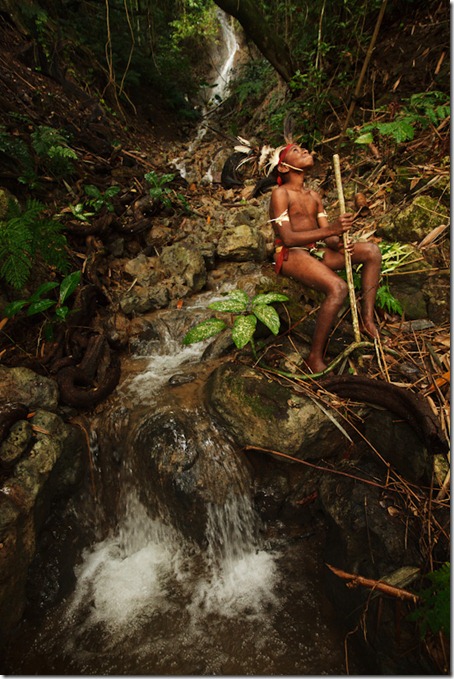 A few posts ago I mentioned that I got involved in helping some locals with the promotion of their regions as tourism destinations through my photographs. In fact I not only ended up doing the photos, but also dished out quite a lot of advice, since the people on most islands of Vanuatu (besides two main ones – Vila and Santo), well they don’t have much of an idea of what foreigners actually want and their misconceptions could not be further from the truth. That is of course very understandable, since their culture and general approach to life could not be much more different from that of “white people” or most foreigners in general.
A few posts ago I mentioned that I got involved in helping some locals with the promotion of their regions as tourism destinations through my photographs. In fact I not only ended up doing the photos, but also dished out quite a lot of advice, since the people on most islands of Vanuatu (besides two main ones – Vila and Santo), well they don’t have much of an idea of what foreigners actually want and their misconceptions could not be further from the truth. That is of course very understandable, since their culture and general approach to life could not be much more different from that of “white people” or most foreigners in general.
For the moment and likely for at least five years or more, most of outer islands of Vanuatu (as all the islands outside of Efate where the capital is located are called) are pretty darn far from being “real” tourist destinations. I mean this in the sense that they are not particularly suitable for those who want to relax in comfort, eat well, drink or party. Outside of about three major towns, there’s no electricity, running water is very uncommon and perhaps the most painful thing, at least for me, is that the locals, for most part could not care less about what they eat. There’s no food culture, which equals to no tasty local cuisine as you get in most places around Asia or elsewhere where there is a food culture.
All the minuses aside, Vanuatu offers something that few places offer these days and that is untouched, pristine and absolutely stunning nature. On top of that the people (the Ni-Vanutatu or Ni-Vans, as they call themselves) are some of the most charismatic, friendly and likeable on the planet. There’s also no hassle, no one attempts to sell you crap that you don’t need, no one tries to trick you or rip you off. As much as I love places like India, Nepal and Indonesia, it gets pretty annoying when people constantly see you as a money bag and come up with the most ridiculously creative ways of making you part with your money. You just don’t have that in Vanuatu, at least not yet.
Besides the already mentioned virtues, there’s of course the culture. As I also mentioned in a past post, the culture is undeniably disappearing, but it hasn’t disappeared yet, at least not everywhere. And while there are still places where you can experience this incredible culture in at least some shape or form, you have to go. In some very strange way it appears that the foreign interest in the culture of Vanuatu’s islands has made a lot of Ni-Vans realize just how precious their culture is. At the end of the day, it may very well be tourism which will help ensure that not all is completely lost.
But let me now get specifically to South West Bay. It is one of two regions which I photographed with the aim of helping promote it. As you might have already gathered I am also ready to promote it through my blog and the internet in general, but that doesn’t mean that I’m simply going to sugar-coat everything. I’ll tell the truth, and in this case the truth is good enough to get people to come.
My idea to do this little project came after I met a good man by the name of George Thompson. George was born and grew up in the very remote South West Bay, Malekula. Through some visionary thoughts, hard work and twists of fate he was able to become the leading tour operator and the head of the tourism department in his region. This role even gave George an opportunity to travel to Europe for a tourism expo in the late nineties. He saw places that very few Ni-Vans get to see – France, Germany, Denmark. While he loved the experience, travelling abroad made him realize that things back home were not as bad as some of his fellow countrymen had imagined. Sure, Vanuatu is a poor country by Western standards, but paradoxically there are no homeless people and no one begs for money or food. On top of that the air is fresh and the culture is rich.
When George got back, he had become even more inspired and passionate about showing off his region to the occasional tourists. By 2000 things were looking good, tourist numbers were slowly growing and the income that tourism provided made people’s lives just a little easier. However, things in Vanuatu can change rather quickly. Corruption and “mismanagement” of funds at the higher level are common and around 2004 the nationwide tourism company “Island Safaris” the branch of which George led successfully in South West Bay went down due to “mismanagement”. Tourism numbers started to decline faster than they rose, without the support of a bigger company there was no way that George or the locals could market their region to the outside world. To add even more pain to the dilemma, the airport of South West Bay was sporadically closing and opening, thus making it harder for anyone to get to the area. In a couple of years there were virtually no tourists visiting South West Bay.
Because of George’s past friendships and connections he was able to get a good job, managing a small resort in Port Villa. He had a relatively easy life and a high salary, by Vanuatu standards. George worked at the resort for a couple of years, but soon he became haunted by the thoughts of home. He was away from his family and he knew that while he was having it easy, the people of South West Bay were struggling. He felt pain and guilt and before long he got back to South West Bay with the hopes of reviving the small, but once stable tourism industry that he helped build.
Fast forward to 2010 and things are not looking so bright. Over the past few years tourism has still been near non-existent. Instead of helping bring up the lifestyle of others, George found himself in a similar situation as them. He didn’t tell me his story when I met him, he’s not the kind of person to whine or complain about life, that doesn’t seem to be part of the Ni-Van mentality in general. Instead I got all of this information out of him during the two weeks that I spent in the area, this of course made me even more motivated to help the man in at least some way.
The particular idea about me making some photos came after George showed me some of the past photos of the places in his region sent to him by tourists. According to his stories, the places were beautiful and the people in those places fascinating and so when I saw images that were let’s say not very inspiring I felt a little uninspired myself. I know that I’m not the only one who gets excited about a place by seeing a single beautiful image of it and so with that thought in mind I suggested that we create a little tourism marketing campaign. The campaign would be a combination of documentary images of some of the more photogenic activities, places in the region, as well as some set up shots of the locals dressed in their traditional costumes in their beautiful surroundings.
For me personally the shoots were a reward in themselves. I have been shooting documentary stuff for years and I’m always interested to be placed into new photogenic situations. As far as the set up shots, it was in a sense even more fun to do them. I’d made a couple of short fiction films while at uni and photo shoots of this sort, while fairly new to me were in a some ways similar to making short films. In this case you could say that the shoots were a blend of fiction and documentary (the line was very thin). Our “actors” had to be themselves, they simply had to be in specific locations, wearing costumes which they used to wear in the past and still wear during celebrations or as was customary for the chiefs and some village members while greeting visitors (i.e. tourists). The dances, which are a big thing in the region are performed in similar outfits, (usually more elaborate) so all in all the images we created showed what was most visually exciting about the region of South West Bay and something that the visitors would get a chance to see themselves.
And so let me get to the photos. This is a just a portion of the images I created, you can see more HERE and in the coming months. The image at the top is of one of the boys (Pillison was his name) who I had seen performing the kastom dance at a pig killing ceremony a couple of days earlier. I wanted to photograph him in a similar costume in front of the waterfall, one of the hidden little gems of the area.
Pillison was a great model so we got him and his little mate into a canoe and asked them to row along the shoreline a little. For full impact, I expect this or a variation of this image to be shown in a bigger medium than the 450 pixel photo on a blog. You can get a better view by clicking on the image (to make it larger). Mountains and sea always look dramatic to me and more so when they’re bigger.
This is Chief Ayar again. I blogged about him HERE. I took quite a few shots of this fascinating man. I expect that some of them will be used in something like a brochure, while I’d like to use others, like this one along with images that make up a story, which, if things work out will hopefully appear in some of Vanuatu’s tourism magazines.
A moment from the pig-killing ceremony. During my stay in South West Bay, two chiefs “upgraded” their ranks. Two pigs were killed and meat was shared with the villagers.
Every pig killing is preceded by a traditional or kastom dance. Only certain individuals are allowed to take part. The young are once again being taught the steps of the dances as part of a cultural revival in South West Bay.
For those who like hiking, there’s a fascinating hike to the creepy ancient burial site in the hills above the village of Melmes. The guide, a young chief by the name of John was very passionate in telling us about the history of his people. Below those skulls is a mass burial hole, but before the bodies were placed there they were put onto a high rock. Because John’s tribe thought that they descended from the eagle, they had a little custom associated with this bird. They believed that if the eagle were to eat the eyes of the dead body (when it was placed on the high rock), that person would go directly to paradise, if not, well they go to hell. When I asked John whether many of the dead actually had they’re eyes eaten and went to Paradise, he replied with an uneasy smile – “No, most of our ancestors went to hell.”
Mat-weaving is one of the women’s main occupations. They weave mats for home as well as for sale in big towns like Port Villa in order to generate a small income that usually contributes to the ridiculously high school fees they must pay for their children each year.
Another documentary image taken inside of the village bakery. The baker is cleaning out the ash before putting the bread inside the oven. Once I am home, near a fast connection I’ll try to post some video that I did in this very atmospheric little spot.
George’s uncle is one of the highest chiefs in South West Bay, people like him are an “attraction” in their own right, they are living history and chatting to folks like that is always a highlight of any trip. George’s uncle (his name escapes me, it was a long traditional name, not a Western one) had never had a white man in his house before, so he felt a little nervous when I came to photograph him there. He still had reservations about white people in general because in his youth the presence of a white man was usually bad news. He signed to me that they used to kill the locals by making the cutting of a neck gesture with his hand.
My presence I was sure left him pretty puzzled. I was using the off camera flash in a soft box, which meant that I’d click the button on the camera and the flash would go off (away from the camera). George later confirmed that the flash was indeed a source of bewilderment and amusement as his uncle told fellow elders “This white man came to take my picture. He pressed the button in one place and then this bright light would go off in another place! He’d talk to his woman, she’d press something on the thing that makes the light and then the same thing would happen again, over and over!”
South West Bay is stunningly beautiful. I am not a landscape photographer, but even I was seduced by the scenery of dramatic, red, cliffs and greenery lining the shore. There are much more scenes for the landscape photographer and if I was one of them I’d probably stay even longer.
More beautiful nature (click the image for larger size) and another youngster in a canoe. This is in fact a lagoon about a half hour’s walk from George’s house. Beautiful place, warm people and you only have to dip the net in for a few minutes before you catch fish. Once the traditional owner of this area builds a thatched bungalow, this will be a great place to spend a couple of days.
Just a few hundred meters from the lagoon, you come to this place, which made me feel a little like I was in a forest in Europe. The setting sun made for a perfect lighting scenario and I couldn’t resist making a couple of exposures.
Some final words: For those who are into photography and interested in visiting Vanuatu there are some good news. Through working with me George learned a good bit about what sort of stuff more serious photographers might be interested in. In other words he knows that we don’t like cheesy pictures of kids giving us the thumbs up (very common in Vanuatu) or people standing with their hands by their sides like soldiers before a march. He also understands that sometimes real life is the most fascinating subject of all, so he can help the photographers get access to shoot stuff like that.
I might be doing a workshop in Vanuatu at some stage and if I do there will only ever be one. However for the more independent minded or more advanced photographers, I highly recommend you to get over to South West Bay and to let George show you around. I’ve only scratched the surface here. There’s reportedly a great reef for those who love shooting underwater (I had left my housing near the airport not knowing this) you can go on a wild pig hunt with a couple of dudes with bush knives and a pack of dogs. There are more traditional villages and fascinating elders in the mountains and some folks shoot river fish with bows and arrows.
Oh and did I mention that the whole thing will be extremely affordable, especially by Vanuatu standards? Whatever you pay will go directly to the community, there are no middle-man organizations (as is often the case when you do things through bigger companies). I don’t get anything out of it apart from satisfaction in knowing that I helped someone. I’ll post more on the prices and the possibilities at a later stage, but if anyone is already interested, feel free to contact me via this blog or the email on my website.
Fishing on Maskelyne Island
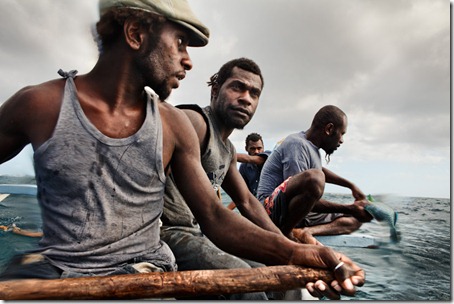 Those who have been following my blog for a while know that I have a bit of a photographic obsession with fishermen and things related to fishing. It’s not that I like fishing myself (I find it a little boring), it’s that there’s something about the visual aesthetic in the things around fishing that appeals to me. All those gadgets – boats, canoes, nets, sails, oars. Of course I do love eating fish and whenever you’re photographing fishermen, there’s a good chance that there will be at least some fish for dinner. If you ask me, that’s a great bonus.
Those who have been following my blog for a while know that I have a bit of a photographic obsession with fishermen and things related to fishing. It’s not that I like fishing myself (I find it a little boring), it’s that there’s something about the visual aesthetic in the things around fishing that appeals to me. All those gadgets – boats, canoes, nets, sails, oars. Of course I do love eating fish and whenever you’re photographing fishermen, there’s a good chance that there will be at least some fish for dinner. If you ask me, that’s a great bonus.
Because so much of Vanuatu is along the coast, one would think that fishing would be done in every single coastal village. While there’s certainly a lot of fishing, it’s not quite as widespread as I imagined. Nevertheless one of the places I visited – Maskelyne Island, also known as Ulleveo was pretty ideal. Here people mostly fish with small canoes and the process involves a lot of rowing, casting fishing nets and even the occasional use of the local spear gun called “lastic”, probably because essentially it’s just a piece of elastic tied to a piece of wood. I’m proud to say that I tried it out and even managed to spear one fish.
Anyway, the process promised to be pretty interesting and photogenic and I had been dying to use my underwater housing to photograph something besides coral and fish (no offence to coral and fish, it’s just that these subjects just bored me eventually). I went on two little fishing trips – one with a bunch of local children, the other with a few guys around my age. The children were spear-fishing and unfortunately they didn't go for very long because the sea was a little rough, so rough that I almost floated away because of not initially wearing my fins.
The older “boys” technique included the use of a net. They’d spread it out and then someone would start swimming and making strong splashes in the water in the hopes that the fish will frantically swim towards the net and get caught in it. Once in the net the fish would meet their doom as one of the chaps would swim towards it, spear it, extract it and put it into the canoe. At the end of the trip guys didn’t get much fish, turns out I was always in the wrong place while taking photos. I’d scare the fish and cause them to flee in the wrong direction. To console my fishing mates I decided to buy them a bucket of kava, which they appreciated greatly.
About the photos, these aren’t my greatest photographic achievements, but these are the better shots of what I’ve created so far using my Aquatech housing. The big problem was that to shoot something like this (at least the underwater part) truly effectively one needs to know what the heck is going on, what to expect and I didn’t know either. I’ve learned though and my next destination – the remote Banks islands will hopefully provide me with plenty more opportunities to photograph this sort of stuff.
One of the main reasons I got the housing was to get shots like these. What I mean is shots taken from the level of the water. It’s not underwater stuff, but without the housing you just ain’t getting a shot like this one.
In this particular scene the younger boys are getting ready to jump back into the boat after doing some spear fishing.
One of the youngsters taking aim at a fish with a “lastic”. Boys start doing this sort of stuff from a very early age. By their teens they are incredibly good swimmers and I guess they’re not bad at shooting either.
The older guys looking around for the right spot to cast the net. They have a few favourite spots which they come back to all the time and they can recognize them without GPS or anything alike. Another interesting example of a close bond between people and land or in this case water.
Spreading the net for the fish to become tangled in. I like how the light penetrates through the water, creating a fairly dramatic effect. The thing that I’ve learned so far about light and underwater photography is that – the more light you have the better.
Often the fish hide in underwater burrows and amidst the coral. The fishermen know where the best potential hiding spots are and always make sure to check them out.
A note on the Aquatech housing. I’ve been using the housing for long enough now to form some kind of an opinion on it. I have to say that it’s pretty cool, though there is a bit of a learning curve as in how to get the most out of it and how not to accidentally destroy your camera. I almost killed my 5D MKII because there was a little knob which got loose. I didn’t realize that water could come through because of that. Luckily it didn’t get too loose and the results weren’t disastrous, there was simply some leakage. Still, the camera began to act strange and though it’s back to normal now, I can only hope that some vital part inside it is not meeting a slow death by salt water as I type this.
All in all the housing works as it should. It’s great to have a port for a zoom lens (24-70mm) that allows it to be used as a zoom. Though I shot most of the stuff as wide as possible, I did need to get closer without physically getting closer a few times and you aren’t exactly going to be able to change lenses under water and so, the zoomable port is a huge bonus.
I will write much more about the housing later. I think it’s a good product and for the price range it seems like there’s nothing really better, so I think there’s some more valuable info I can share with anyone searching to get a housing for similar use.
Transcending Travel – my new eBook
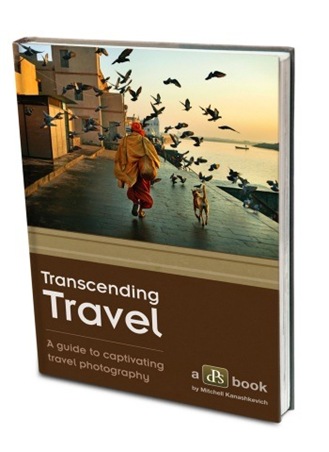 Just wanted to pass the word that my new eBook, which I did for “Digital Photography School” is out. I’ve put a lot of work into this one and I’m pretty over the moon about the fact that Darren Rowse, who is the founder of DPS (which happens to be the biggest photographic community on the web) decided to team up with me for this eBook. Darren is definitely one of the gurus of social media, he also runs the extremely useful and popular ProBlogger, it’s always an honor to be associated with people like that, who are at the top of their game.
“Transcending Travel – A Guide to Captivating Travel Photography” is ideal for beginners and intermediates, but even if you’re a seasoned shooter I hope that it can provide you with some inspiration and food for thought or just give you a look at how I do things photographically.
Just wanted to pass the word that my new eBook, which I did for “Digital Photography School” is out. I’ve put a lot of work into this one and I’m pretty over the moon about the fact that Darren Rowse, who is the founder of DPS (which happens to be the biggest photographic community on the web) decided to team up with me for this eBook. Darren is definitely one of the gurus of social media, he also runs the extremely useful and popular ProBlogger, it’s always an honor to be associated with people like that, who are at the top of their game.
“Transcending Travel – A Guide to Captivating Travel Photography” is ideal for beginners and intermediates, but even if you’re a seasoned shooter I hope that it can provide you with some inspiration and food for thought or just give you a look at how I do things photographically.
You can find more info HERE or by clicking on the picture above. This week there’s a 25% off special and there are also some pretty cool incentives, check out the links for more.
That’s all from me for now. More to come soon.

